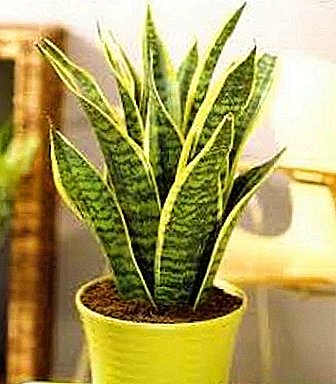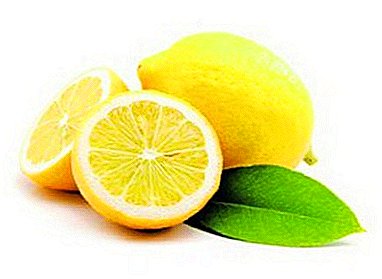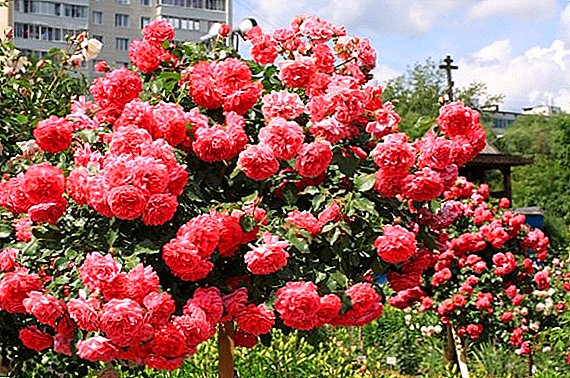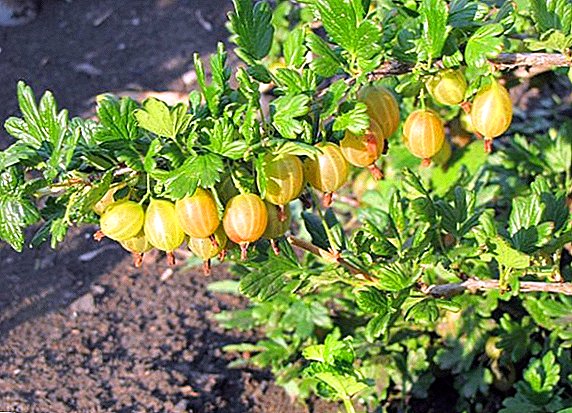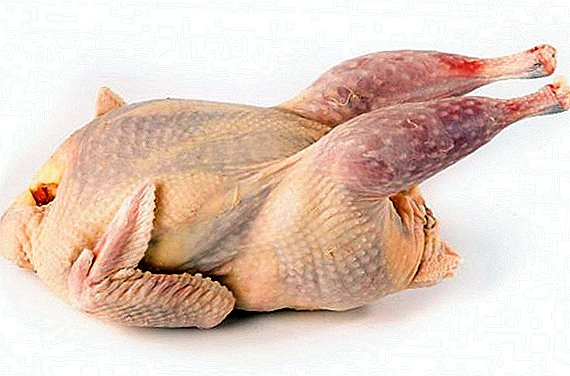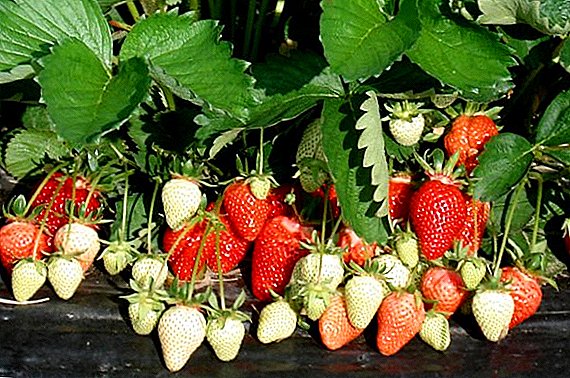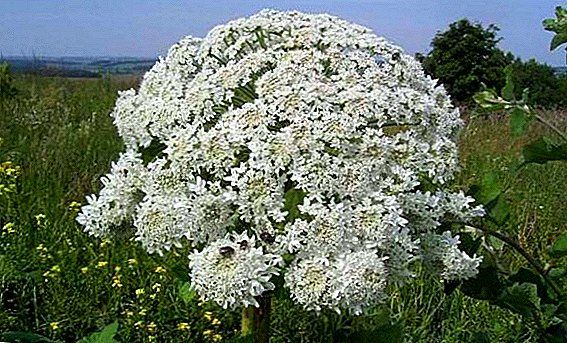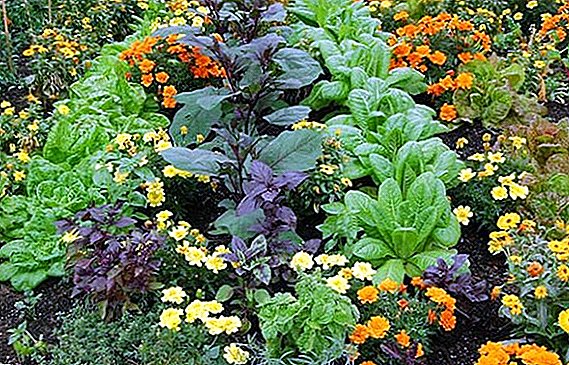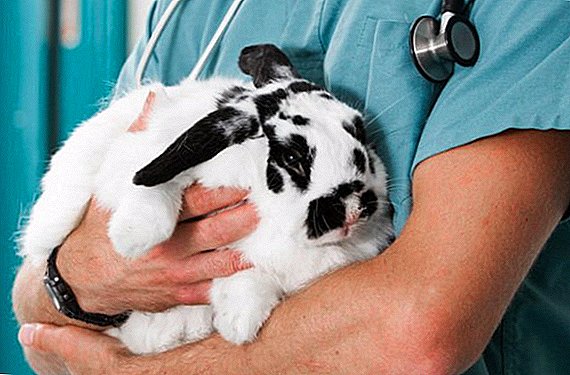 One of the simplest and, at the same time, reliable ways to protect rabbits from various viral and infectious diseases is vaccination. Each breeder breeder, as well as the owner of decorative pets, must know how to vaccinate animals properly, at what time and at what age.
One of the simplest and, at the same time, reliable ways to protect rabbits from various viral and infectious diseases is vaccination. Each breeder breeder, as well as the owner of decorative pets, must know how to vaccinate animals properly, at what time and at what age.
Vaccination features
Vaccination of rabbits is mandatory, regardless of the breed of animals and the conditions of their detention. Similar vaccinations are also made to decorative pets, since even insect bites or walking on the street can cause the development of deadly ailments.
How old do
Rabbits that feed on mother's milk are protected from viruses and infections by strong immunity, developed during feeding. Such immunity persists for another month after weaning babies from the mother.
We advise you to get acquainted with the methods of treatment and prevention of diseases of rabbits, as well as learn what eye and ear diseases can affect the rabbit.
Accordingly, the first vaccination is recommended from the age of 1.5 months and upon reaching a rabbit weight of 500 g. After 3 months revaccination is performed. After that, vaccination is carried out every 6-9 months (depending on the type of disease) throughout the life of the rabbit. 
Is it possible to vaccinate pregnant rabbit
It is desirable not to vaccinate pregnant females due to a possible negative reaction to the drug. It is better to do this a few weeks before the proposed mating. If the need for vaccination has arisen, then it is recommended to carry it out on short periods of pregnancy.
But nursing females vaccinated is prohibited. The babies receive temporary immunity from the mother’s diseases along with the milk, which persists for one month after the cessation of feeding.
What vaccinations do rabbits and from what
There is a special vaccination plan for rabbits, which includes several mandatory vaccinations: for myxomatosis, rabies and UHD. These are the most common diseases that animals can get infected with anywhere: when kept in unsanitary conditions, from insect bites, when in contact with dirty equipment, etc.
From myxomatosis
Myxomatosis is a dangerous viral purulent disease that affects the genitals, mucous membranes, and can affect the digestive system. The disease is transmitted by airborne droplets or through insect bites. The percentage of mortality in myxomatosis is quite high, at 70–100%.  The characteristic primary symptoms of the disease are:
The characteristic primary symptoms of the disease are:
- development of purulent conjunctivitis;
- fever and fever;
- swelling;
- nodules throughout the body.
Read more about how to identify and treat myxomatosis rabbits.
This disease is practically not treatable, therefore vaccination is considered the only salvation. From the moment of infection, sick rabbits die on the second day. For vaccination of animals using the drug "Rabbiwak-V", which is a neutralized strain of Myxoma virus, in which a protective environment has been introduced.
Vaccination is carried out according to this scheme:
- The first vaccination is recommended in the spring, at the age of four weeks.
- A month later, you can make a second vaccination.
- The third time - in 6 months, in the fall.
Subsequent vaccination is carried out twice a year, in spring and autumn. 
From rabies
As a rule, rabies is rare in rabbits. However, vaccination is recommended for those who breed decorative ornamental rocks, especially if you have to travel a lot.
The fact is that in the absence of an animal in the passport about the presence of vaccination, the passenger and pet are not allowed on the plane and are not allowed through the border. In addition, rabies does not respond to treatment, and the infected animal dies within one week.
The disease is manifested by the following symptoms:
- the animal refuses to use water;
- abundant salivation is observed;
- the behavior of the rabbit changes: it becomes restless, aggressive, or, conversely, too calm and affectionate.
Important! Only completely healthy rabbits are vaccinated. Patients or recently recovered animals have significantly reduced immunity, and the body can not cope even with a weakened virus.The virus enters the blood through the skin and causes damage to the nervous system. The only way to protect a pet is to vaccinate. The first is carried out at the age of 2-2.5 months, the subsequent injections are given once a year. Before the planned trip abroad vaccination is carried out for a month.

From VGBK
VGBK - viral hemorrhagic disease of rabbits or, in other words, distemper, is a dangerous disease that affects the internal organs. The disease proceeds rapidly, causing congestion in the liver and kidneys, extensive hemorrhages, as a result of which the pet dies several days after infection. The source of the virus can be dirty litter or animal feces. Disease bearers - insects, mice, birds.
Special attention should be paid to the rabbit if:
- he refuses food;
- his body temperature rises to +40 ° C;
- he behaves sluggishly, there is constant drowsiness;
- the animal groans, he has cramps;
- in rabbit plentiful mucus from the nose.
Important! If before this the animal was vaccinated against myxomatosis, then it is necessary to sustain an interval of two weeks between vaccinations.Unfortunately, there are no drugs for UHDB. Only vaccination will help, the first injections of which are carried out at 1.5 months. The vaccine is available in the form of a pink or clear suspension with a grayish sediment and is dispensed in the vet pharmacies in the form of 10, 20, 50, 100 or 200 cc bottles.
Video: Rabbit Vaccination The next time the injection is carried out after 3 months, and then after six months. Introduce the drug intramuscularly into the thigh of the animal. Before using the drug should be thoroughly shaken.
Familiarize yourself with the symptoms and treatment of rabbit viral hemorrhagic disease.
From worms
Often, animals are susceptible to infection of diseases caused by exposure to various parasites: pasteurellosis, salmonellosis and listeriosis. To prevent the development of ailments, it is recommended to vaccinate animals. Such vaccinations are not mandatory, and the decision about the feasibility of their conduct must take a veterinarian.
With insufficiently good living conditions, on large agricultural farms, animals may experience pasteurellosis, symptoms of which are:
- sharp increase in body temperature;
- profuse tearing;
- severe chills and fever.
The first dose of vaccination from this disease should be entered in 1.5 months. After that, another 2-3 revaccinations are performed in the first year of the rabbit’s life. If animals refuse to eat, while they behave sluggishly and they have diarrhea, then, most likely, they suffer from salmonellosis.
The vaccination scheme for this disease is similar to the pasteurellosis scheme, but vaccinations should be done at intervals of two weeks. Listeriosis is manifested in most cases in females. They behave sluggishly, apathetically, lose their appetite. 
Against all three diseases, an associated vaccine can be used, the introduction of which should be developed by a veterinarian.
Comprehensive vaccinations
The best option for those who are engaged in breeding rabbits is considered to be a complex (associated) vaccine, which includes antibodies against myxomatosis and VGBK. The package contains two bottles of vaccine, before the introduction of which their contents must be mixed in one syringe.
Among the list of the most high-quality drugs can be noted:
- "Rabbiwak-V" - produced by the Russian company "BiAgro";
- "Nobivak Muho-RHD" - produced by the Russian division of the Dutch corporation "MSD Animal Health";
- "Lapinum Hemix" - produced by the Ukrainian company "BTL".
It will be useful for you to read about how to breed and prick the associated vaccine for rabbits.
The first portion of the associated vaccination is administered to the animal at 1.5 months intracutaneously, intramuscularly or subcutaneously. Revaccination is carried out after 3 months. The complex vaccine can be vaccinated all healthy animals, including, if necessary, and pregnant. Vaccinating nursing females is not recommended.
Video: which rabbit vaccines to choose
Vaccination of rabbits at home
When deciding to conduct vaccination at home on your own, you need to understand that this procedure is very responsible and serious, because:
- if it is wrong to inject a pregnant rabbit, then the babies may die inside the womb;
- if a very young rabbit (under three weeks old) is vaccinated, he may die.
Before carrying out the procedure, you should carefully study the instructions and prepare all the necessary materials: an insulin syringe, distilled water, personal protective equipment.
Training
The vaccination phase begins with the preparation of the animal:
- A few weeks before the intended vaccination, it is recommended that deworming of rabbits be made with special anthelmintic drugs;
- on the eve of vaccination, as well as immediately before the introduction of the drug, body temperature should be measured: for this, a thermometer must be carefully inserted into the pet's anus - the temperature is from +38.5 to +39.5 ° C;
Important! If you plan to self-vaccination at home, it is necessary to purchase antihistamines, if any allergic reaction develops in animals.
- they inspect the rabbit: pay attention to its behavior, the color of feces and urine, the general condition, and with the slightest deviation from the norm, the vaccination is canceled.

Instructions for use
Of course, vaccination is better to entrust a qualified doctor. However, if it is impossible to do this for any reason, then you can carry out the vaccination yourself.
Did you know? Rabbits are wonderful pets. They have good health, unpretentious care, they, like cats, can be accustomed to the tray for the toilet. Moreover, rabbits, like dogs, run up to the door if a guest approaches it.Getting to the introduction of the drug, you need to be guided by the following rules:
- Carefully study the instructions for the vaccine, familiarize yourself with the timing and route of administration, the necessary doses, the revaccination period. The drug must be purchased from verified vendors, veterinary pharmacies, check its shelf life and storage conditions.
- To enter the solution only strictly according to the instructions - intramuscularly, subcutaneously or intracutaneously, as well as in the specified places: thigh, auricle, withers.
- Use only disposable syringes, automatic syringes or special-purpose equipment.
- It is recommended to carry out vaccination at air temperature up to +28 ° C. At higher temperatures, the animals longer "move" from vaccinations.
- Observe the "cold chain" mode: storage and transportation of the drug should be carried out at a temperature of + 2 ... +8 ° C. Do not freeze the funds or store it at high temperatures.
- Vaccines made in powder form are diluted with distilled water or special diluents.
- The shelf life of an open vaccine or diluted water is not more than three hours. It is strictly forbidden to use the finished solution after this time.
15 minutes after the vaccination, the rabbit may experience such reactions as weakness, shortness of breath, increased salivation, lacrimation. To remove them use antihistamines. If the symptoms do not disappear, then the animal should be immediately shown to the doctor.
Did you know? Today in the world there are about 200 breeds of rabbits, among which 50 are decorative. The average life expectancy of animals at home is 10-12 years, while in the wild they live only 1-3 years.
Rabbit vaccination is the most accessible and easiest way to prevent the development of various fatal ailments. Modern drugs have excellent efficacy, good quality and minimal risks of complications. The main thing: strictly adhere to the scheme of vaccination, use only fresh medicines and prick them completely healthy animals.
Reviews from the network

5 days prior to vaccination, baby rabbits are melted for 3 days with solikox. This is prevention from coccidiosis. It is very important to endure a break between drinking and vaccination. Solikox give drink 2 ml per 1 liter of water. I try to give in the morning - for the night they gorge on hay and drink water better.
The baby rabbits begin to disappear when they first leave the nest, at the age of 14-19 days, and then every month up to 4 months. The beginning of vaccinations. The vaccine monovalent vaccine
The first vaccination by age is done for myxomatosis at the age of 28 days and older. You can prick Pokrovskoy vaccine, you can Czech Mixoren. Pokrovskaya is a Russian vaccine, it can be institute and factory. More valued factory. Pokrovskaya is done intramuscularly in the leg, and the Czech at the withers subcutaneously. After 2 weeks, they are vaccinated against hemorrhagic disease (hemka). We must try not to change anything in the life of rabbits, because The vaccine itself is stress for the rabbit. Therefore, we leave to them the same feeding and place of residence for a week after vaccination, and then, if necessary, we can change something, for example, introduce a little new food, etc.



